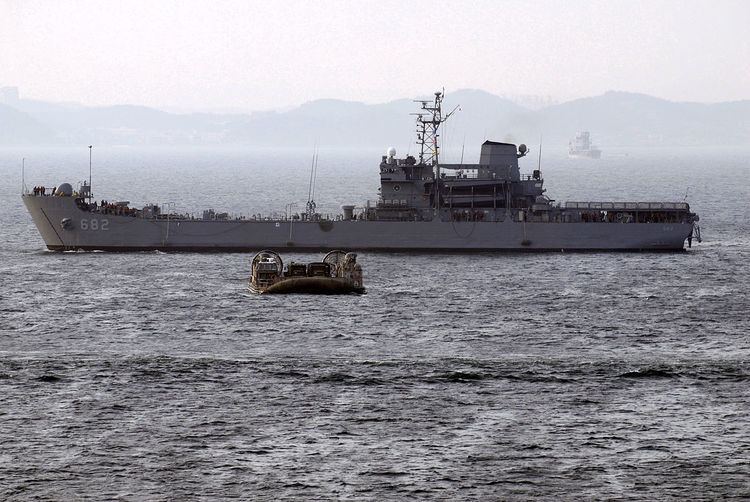Operators Republic of Korea Navy In service 1994 - present Completed 4 | Built 1991 - 1996 In commission 1994 - present | |
 | ||
Builders Hanjin Heavy Industries | ||
Go Jun Bong Class LST (Hangul: 고준봉급 전차상륙함, Hanja: 孤準峰級戰車上陸艦) is an Amphibious Landing Ship class of the Republic of Korea Navy.
Contents
Development
In the late 1980s the Republic of Korea Navy decided to gradually replace its aging fleet of WW2 era LST-542 class LSTs (renamed Un Bong class LST) bought from the US Navy in 1958. A three phase plan was laid out to develop new landing ships to meet the demands of modern amphibious and transport operations.
The first phase was designated as the LST-I project, and development and design started in 1987 by Korea Tacoma, currently Hanjin Heavy Industries. After 4 years of development, the lead ship Go Jun Bong (LST 681) was launched in 1991. Three more ships followed and all four ships were commissioned by 1998.
The second phase, or LST-II, was originally planned to import four Newport class tank landing ships, but after being postponed due to budget issues, it was changed in favor for domestic built 4500 ton LPDs to be commissioned by 2013-2016. These ships will ultimately replace the Un Bong and Go Jun Bong class LSTs.
LST-III was to build two mid-size helicopter amphibious landing ships, and designing started in 1997. In 2001 it was renamed as the LPX project and a total of two 14,300 ton ships were ordered for the Republic of Korea Navy. On July 3, 2007 the lead ship Dokdo was commissioned.
Design
Go Jun Bong class LST is based on the design of the LST-542 class LST, and thus its exterior is very similar to the Un Bong class LST.
The ship is designed to land multiple personnel, tanks and equipment simultaneously with doors and ramps placed on both the stern and bow of the ship, unlike the Un Bong class LST which only has doors on the bow. It is also equipped with a turn table, saving time when loading or landing vehicles.There is also a ramp for moving trucks up to the deck, and multiple elevators for rapid cargo loading.
